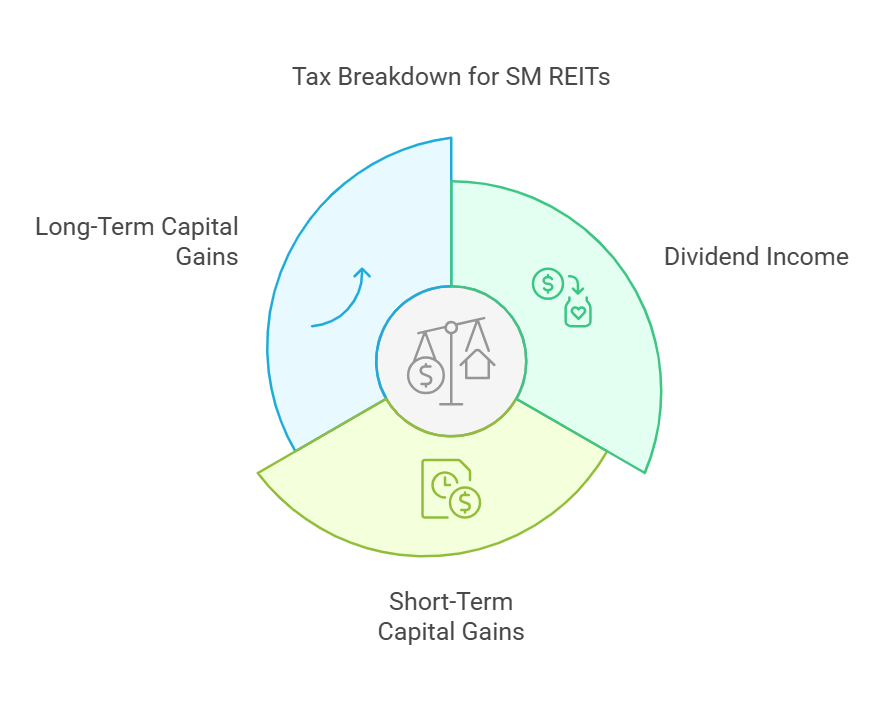What Are REITs?
Real Estate Investment Trusts or REITs own, operate, or finance income-producing real estate across various property segments. They provide a way for individual investors to earn a share of the income produced through commercial real estate ownership without having to buy, manage, or finance any properties themselves. In India, SEBI introduced regulations for REITs in 2014, enabling entities to raise funds from the public by issuing units backed by income-generating real estate.
How SM REITs Are Different from Older and Bigger REITs
SM REITs stands for Small and Medium Real Estate Investment Trusts. These are a kind of subclass within the REIT framework that provides access to individual investors to smaller sets of properties (Smaller to the REITs) which are rent-yielding real estate like office buildings, retail malls, hotels, hospitals, etc. that are valued between Rs. 50 and 500 crores, unlike REITs that typically manage assets above Rs 500 crore. However, Similar to REITs, SM REIT units will also be traded on the stock exchange and are regulated by the Securities and Exchange Board of India (SEBI).
It’s like Largecap and Midcap. You may say REITs take care of Large and Diversified Properties and SM REITs are into smaller and usually single smaller projects. This distinction allows more choices for the players to invest as per their requirements and risk profile. Minimum Investment: While traditional REITs may have lower minimum investment thresholds, SM REITs require a minimum investment of ₹10 lakh, targeting investors with more substantial capital.
- Investment Focus: SM REITs can invest in both commercial and residential properties, while traditional REITs often focus on larger commercial assets.
The Logic Behind SM REITs
There are mainly 2 reasons. One was to regulate the Fractional Real Estate Market, which was on a boom post-2020. And second to make a smaller set of projects available to the retail investors to participate in an organized manner. Since REITs cater to the bigger Value Commercial projects only SM REITS can open the market to many smaller players who may like to unlock their property valuation through this route.
Comparison – REITs, SM REITs, and Physical Real Estate
| Feature | Traditional REITs | Small and Medium REITs (SM REITs) | Physical Real Estate |
| Asset Size | Typically over ₹500 crore | Between ₹25 crore and ₹500 crore | Varies widely; often requires significant capital |
| Minimum Investment | Like Equity IPO, there is a lot of size during IPO and later no limit while transacting on the stock exchange. | SEBI has set the minimum investment amount for SM REITs at ₹10 lakh. This higher threshold is intended to attract investors with a substantial risk appetite. | The high initial investment required |
| Type of Properties | Primarily commercial properties | Commercial and residential properties | Direct ownership of specific properties. Land, Residential, Commercial |
| Type of income generation | 100% Leased | Leased, Under Construction* (*upto 20% of Value permitted) | Investor’s choice |
| Liquidity | Listed on stock exchanges | Listed on stock exchanges | Not Very Liquid; selling requires time and effort |
| Management | Professionally managed | Professionally managed | Owner-managed |
Advantages and Disadvantages of Investing in REITs / SM REITs
Advantages:
- Diversification: Investing in a portfolio of properties provides diversification along with other asset classes like Equity, debt, and commodities. Also, through REITs investor gets exposure to diversified Real estate portfolios.
- Regular Income: Investors receive dividends from rental income generated by the underlying properties.
- Professional Management: Experienced managers handle property acquisition and management.
- Liquidity: Units can be bought or sold on stock exchanges with relative ease.
Disadvantages:
- Market Sensitivity: The performance is tied to market conditions affecting property values.
- Fees: High Management fees can reduce overall returns.
- Concentration Risk: SM REITs may hold fewer properties, increasing risk if those assets underperform.
Small and Medium REITs (SM REITs)–
Challenges & Risks Associated
Investing in SM REITs comes with its own set of challenges:
- Market Volatility: Economic downturns can negatively impact property values and rental incomes.
- Interest Rate Risk: Rising interest rates can increase borrowing costs for SM REITs.
- Regulatory Changes: Changes in laws or regulations can affect operations or profitability.
- Liquidity Risk: Although listed, trading volumes may be lower compared to larger stocks.
SM REITs in India- Taxation
Investing in SM REITs comes with specific tax implications that investors should be aware of:
- Dividend Income: Income earned from dividends distributed by SM REITs is subject to taxation as per the investor’s income tax slab. This means that any dividends received will be added to your total income and taxed accordingly.
- Capital Gains Tax:
- Short-Term Capital Gains (STCG): If you sell your units within one year of purchase, any profits will be considered short-term capital gains and taxed at 20%.
- Long-Term Capital Gains (LTCG): If you hold the units for more than one year, the gains will be classified as long-term capital gains. As per recent tax reforms, LTCG on units sold after one year is taxed at 12.5%, which is more favorable compared to previous rates.

SM REITs in India- How to Invest?
For now, there’s only one option – Property Share – PSPLATINA, which was listed in Dec,2024 on BSE. Going forward you may find many other players entering in this segment, to provide more options.
- You can invest through the Secondary market on stock exchanges.
- You can participate in the Initial Public Offering as and when it comes.
- When there are enough players to review and invest, then you may find even Mutual funds to enter this space and launch sector funds.



